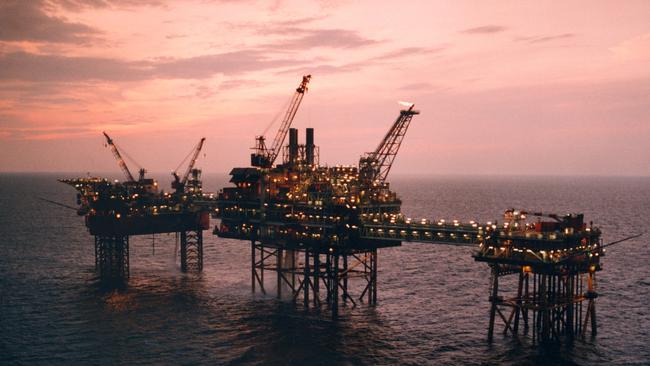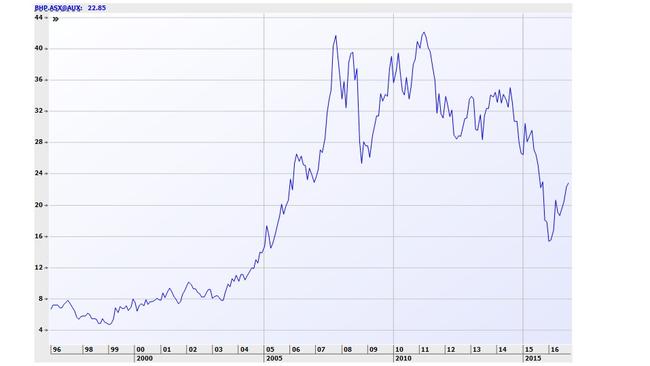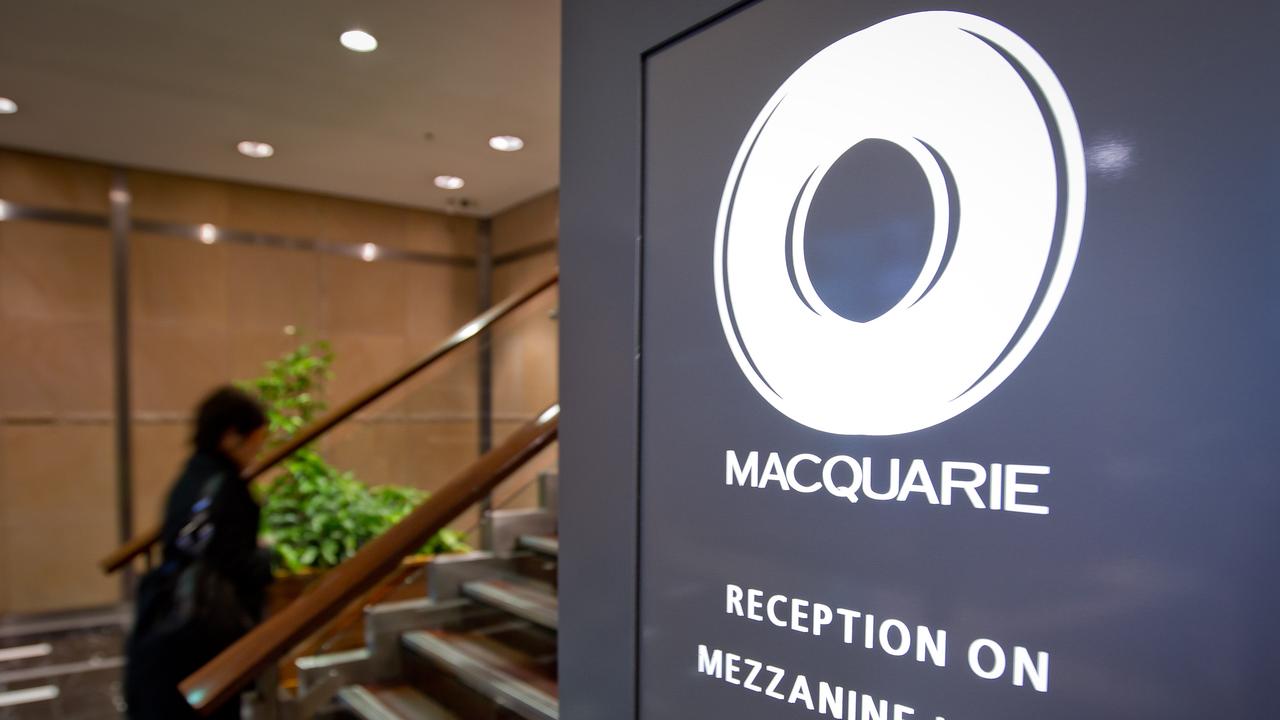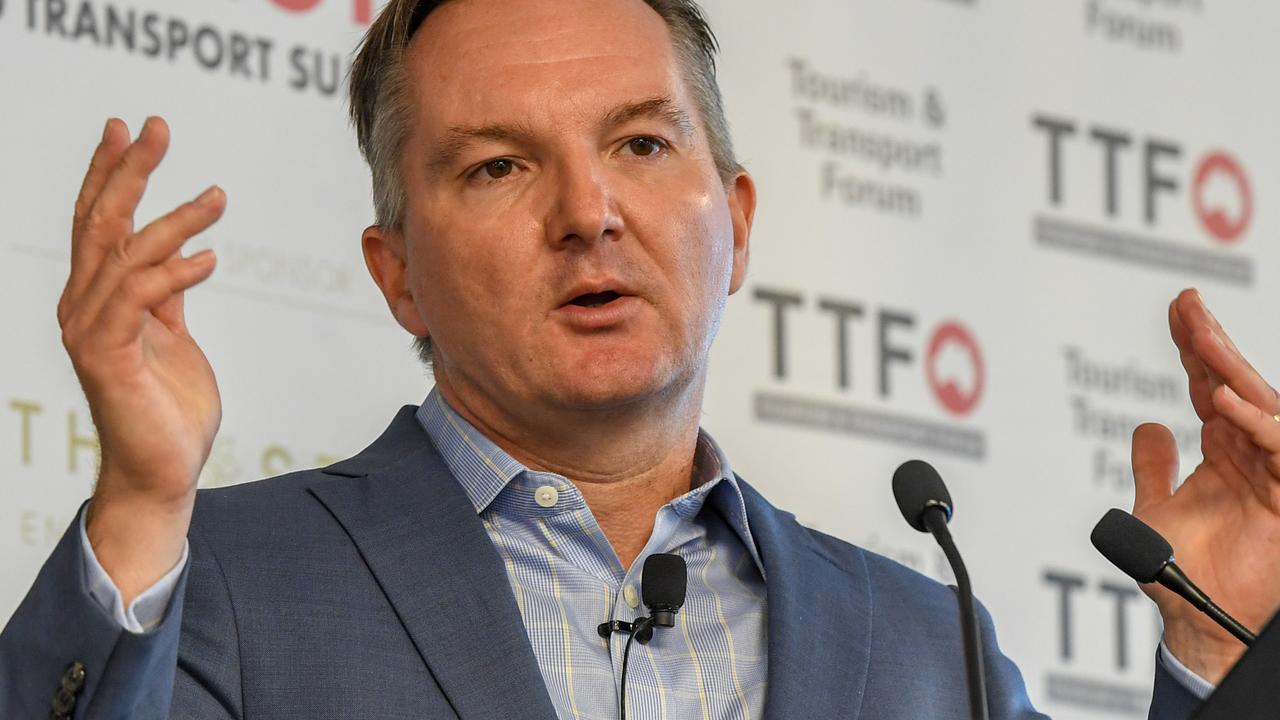BHP is back as markets take a turn for the better
As concerns about the global economy abate and fears recede, BHP’s oil plans are back on the radar of investors.

The higher world interest forecasters are back on track and, even more importantly for Australia, BHP is back in favour among the institutions.
Traditionally, the Big Australian has been the corner stone of many share portfolios and the graph below should make Australian investors feel good.
On global markets, the European bank crisis and the implications of Brexit have has been put aside for the moment, while Trump no longer looks the likely winner of the US presidential election.
Meanwhile, the US economy is clearly strengthening and skilled labour shortages are emerging, so, we look set for the Federal Reserve to move interest rates higher before the end of 2016.
Accordingly, last night the interest rates on 10-year US bonds rose to 1.74 per cent — a big rise from the low of 1.36 per cent a few months ago. That means bond prices are falling in an anticipation of higher interest rates.
And with the likely higher interest rates comes a higher American dollar. Our currency last night fell below 76 US cents.
Conversely, the rush to the US dollar saw gold and other precious metals sold off, again exactly what the text books say should happen when US bonds are falling in price and the US dollar is rising.
Those rising US interest rates skew demand away from high-yielding equities, so global share markets around the world were sluggish.
But with the Putin oil plan on schedule (Vladimir Putin is pulling the strings on oil, September 30) and the Saudi’s ending their campaign to drive down the price, we are seeing a further lift in the price of oil.
For some months BHP has been telling the market that higher oil demand was absorbing the current surplus and that they expected the oil price to rise over the next year. (Conversely they were nervous about the iron ore price).
BHP this week undertook a major presentation London to spruik the value of its oil. The timing was perfect.
Analysts have shrugged off their Samarco fears and, according to Bloomberg, Of the 19 analysts surveyed, 42 per cent rate BHP as a buy. The highest price target is $27 from Morgan Stanley.
And long suffering BHP shareholders will want to put this graph (prepared by Baillieu Holst) under their pillow.

BHP has reduced drilling costs in its US onshore shale business by 40 per cent over two years. This means that more of its US shale oil can be produced economically at current prices, although it does plan to increase on shore production, BHP’s shale oil needs the oil price to rise to $US60-plus a barrel.
The Russian-OPEC cartel may not rush the price back to $US60 too quickly because they know that at that level it triggers much greater US shale oil production.
When markets are strong they feed on upside projections and oil drilling excites bull markets. BHP’s oil drilling plans would have attracted no interest six months ago. Now they do.
BHP has announced that the Caicos well in the Gulf of Mexico has intersected oil on a number of horizons. An appraisal well will now be drilled and, if successful, could underpin a stand-alone development in the Caicos area.
Thanks to lower development costs, BHP’s Mad Dog 2 field is economic below $US50 a barrel so development approval is expected before the end of the year but the field is not expected to commence production until 2022.
BHP says it has a “rich portfolio of brownfield project options,” with total planned capital expenditure of $2.5 billion and an average internal rate of return of 45 per cent. These developments will help offshore declining fields.
Earlier this year, BHP reported it would, starting next July, spend $900m to further explore three deepwater basins — the Gulf of Mexico, the Northern Beagle sub-basin located off Western Australia and the Caribbean.
It’s like the old days.






Suddenly, smiles are appearing on global markets.